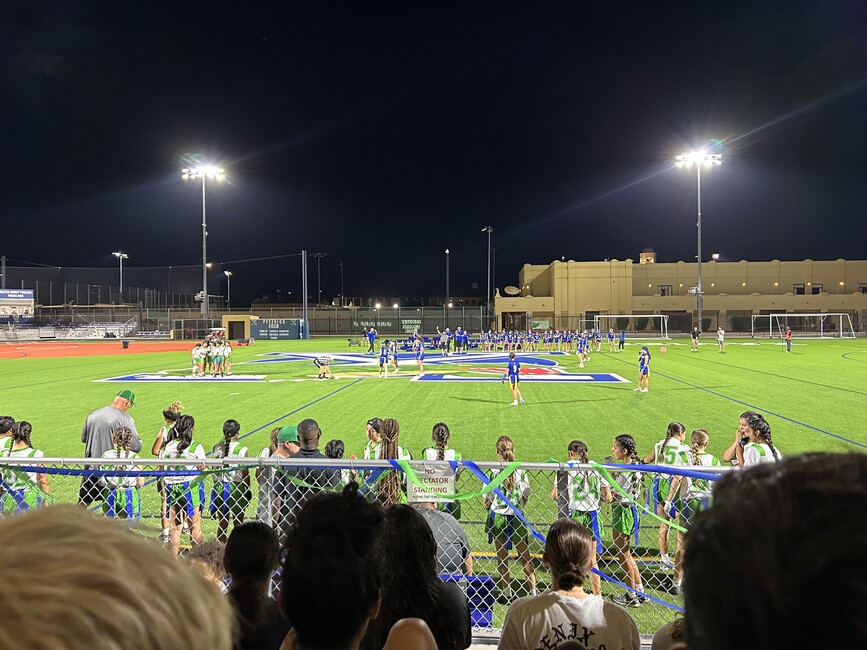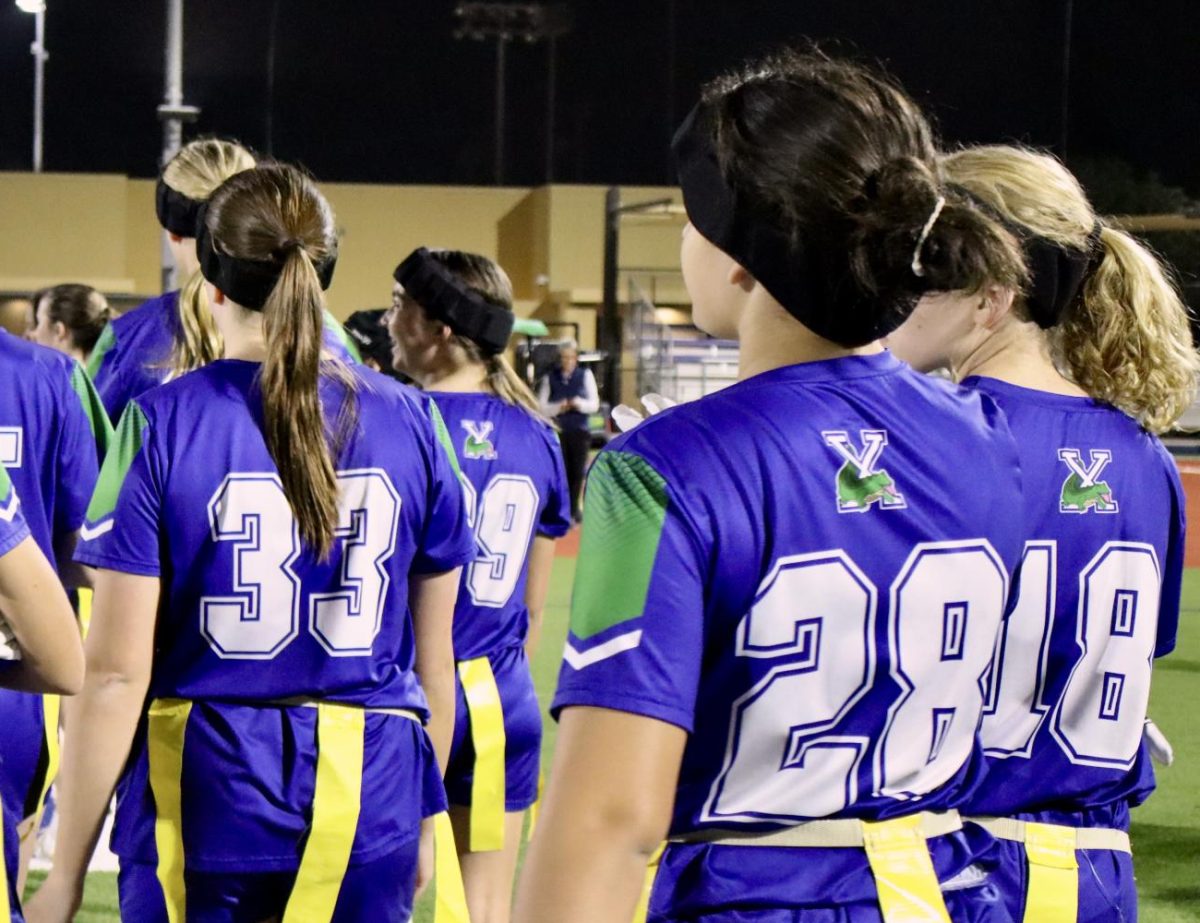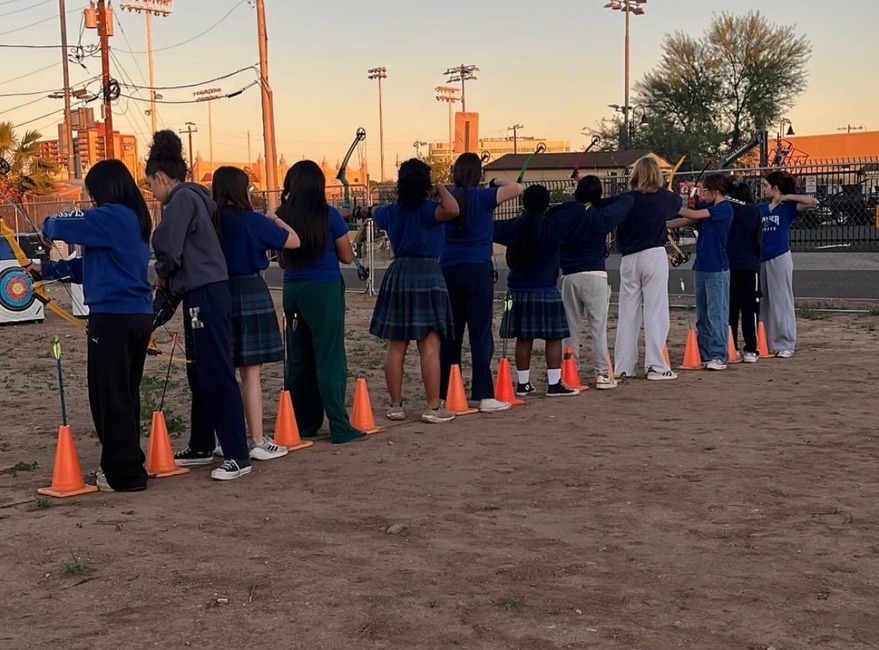Arizona is notorious for its high temperatures, leading many to question how Arizona athletes perform in these extreme circumstances. At Xavier, teams have adopted unique strategies to beat the heat.
Outdoor fall sports, flag football and cross country, practice and compete during the hottest season of the year in Arizona. These athletes depend on immense hydration and early morning practices to avoid the repercussions of the heat.
To avoid the heat, cross country has embraced a unique training schedule. “We train at 5:30 a.m. because it is too hot to train after school. When it is extremely hot outside, our races are usually held at night or in the morning,” said runner Kennedy Frakes ‘26.
“Our fall sport practices are specifically scheduled at certain times of the day to avoid the highest temperatures. Flag football practices are in the mornings or sometimes at night,” added Laurie White, Xavier’s head athletic trainer.
While most high schoolers might still be in bed, Xavier’s cross country and flag football teams are on the ground to elude Arizona’s heat.
In addition to their early morning practices, athletes require sufficient hydration to perform successfully. “We’re really careful to stay hydrated throughout the day. We bring electrolytes to practice, and we take as many breaks as we can so that no one gets sick because of the heat,” flag football player Georgia Schultz ‘27 said.
Additionally, Xavier’s athletic department requires multiple water breaks throughout the duration of practices.
“We tell the coaches to provide at least four separate rest water breaks each hour with a minimum duration of four minutes,” White said.
To further prevent heat-related injuries, Xavier follows the Arizona Interscholastic Association’s (AIA) recommendations. These recommendations include a chart that indicates what degrees are safe in which to play or practice in. The degrees are measured from the Wet Bulb Globe Thermometer which combines the measurements of humidity, evaporation, air temperature and radiant heat.
Through the AIA’s chart and Xavier’s Perry Weather Station on the roof of the school, Xavier’s athletic department measures Arizona’s temperature daily to ensure an athlete’s safety.
Despite the challenges, athletes feel that the heat is actually an advantage, since training in extreme temperatures gives them an edge over visiting teams who don’t.
“When out-of-state schools come to race against us in the heat, we definitely have a competitive edge against them,” Frakes said.
The heat also gives the teams an upper hand when it begins to cool down in the fall. “The heat made our preseason a lot better because, as it cools off, the workouts are more manageable, and we keep getting faster,” Frakes added.
Flag football and cross country begin in August, during the peak of Arizona’s heat. The high temperatures strengthen the teams’ stamina as their seasons come to an end in October.
Despite scorching heat, Xavier athletes continue to rise to the challenges. Through early mornings, constant hydration and relentless dedication, they’ve turned one of the state’s biggest obstacles into their greatest strength.









Vivian • Oct 11, 2025 at 1:18 pm
So well written! Love this article.
S Stolp • Oct 9, 2025 at 6:43 pm
Well written, interesting and informative
Becky Edgell • Oct 9, 2025 at 6:16 pm
I enjoyed the article! Especially, it was neat to learn that the discomfort of the heat can actually result in a benefit to the athletes.
Yamada Asaemon • Oct 9, 2025 at 2:38 pm
I hope we can win it all this year.